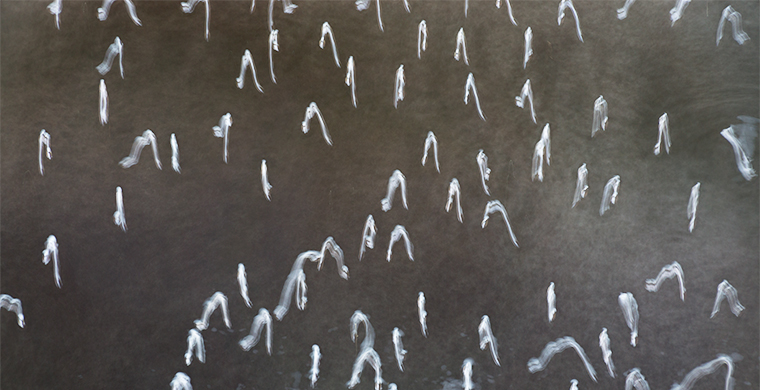
See if you can guess what produced the abstract pattern shown in the photograph above. I will insert an arrow so you can’t just glance down and get the answer,

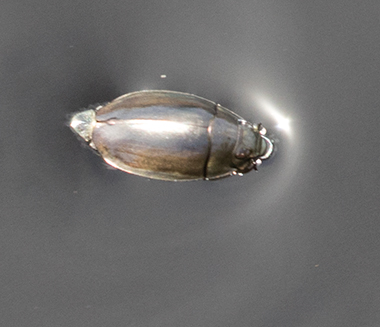
Do you give up? The image was produced by my attempt to photograph this creature (actually a group of these creatures) in the photograph above. This is a type of small beetle (about 1/2 inch long) that swims on the surface of the water. It is supported by the surface film of the water, as you can see by the way it dents the water in front of it (its head is toward the right).
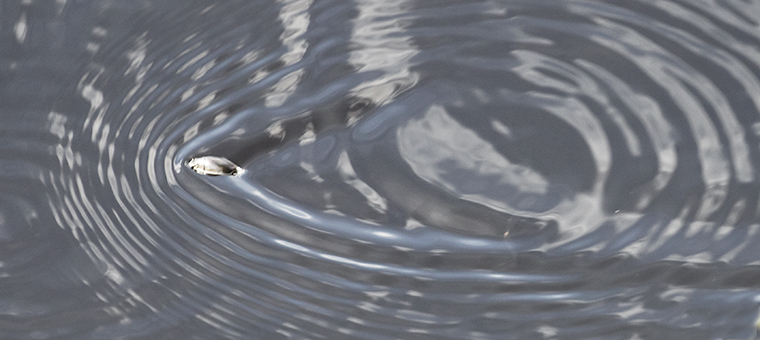
These beetles have the ability to swim around quite rapidly on the surface of the water. Notice that when they are swimming they leave a decided V-shaped wake behind.
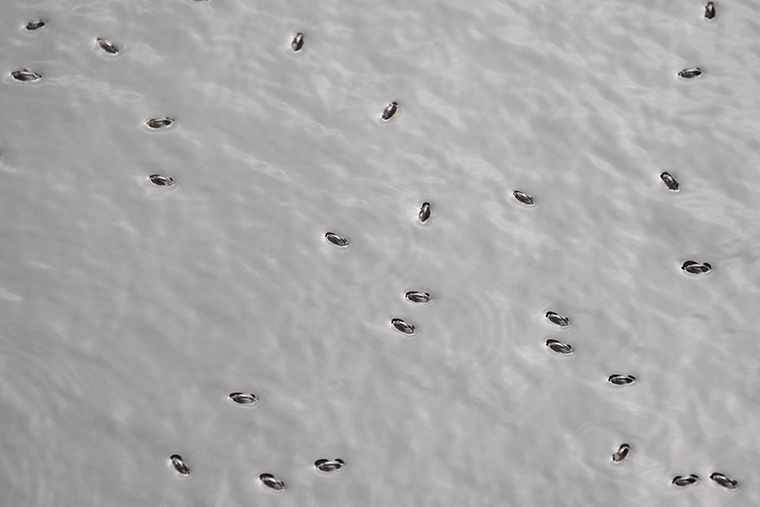
This type of beetle often gathers in large groups on the water surface. Now can you see how the abstract photograph which I presented first was produced? In my haste to photograph a group of the beetles swimming along, I failed to get the camera in focus, so the photograph is of a group of beetles swimming along out of focus. The V-shaped wake behind each one shows clearly, however, and at the apex of each inverted V is one of theses little beetles swimming furiously along, One can’t see the individual beetles because of the focus problem,
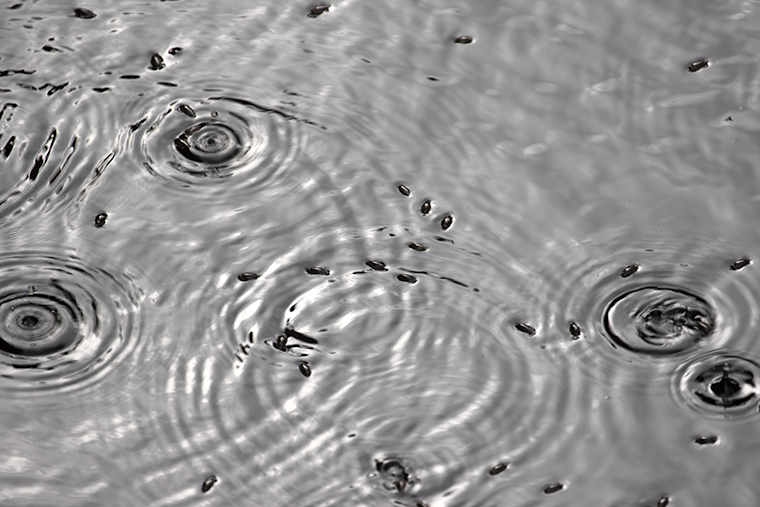
When a group of the beetles get exited they often swim round and round in tight circles. Hence their common name of “Whirligig Beetles” (Cyprinus sp.). In the photograph above you can see some of the circular patterns formed by excited beetles.
These beetles can also dive and swim underwater to escape predators. They have an interesting adaptation which enables them to see both on the surface and underwater,
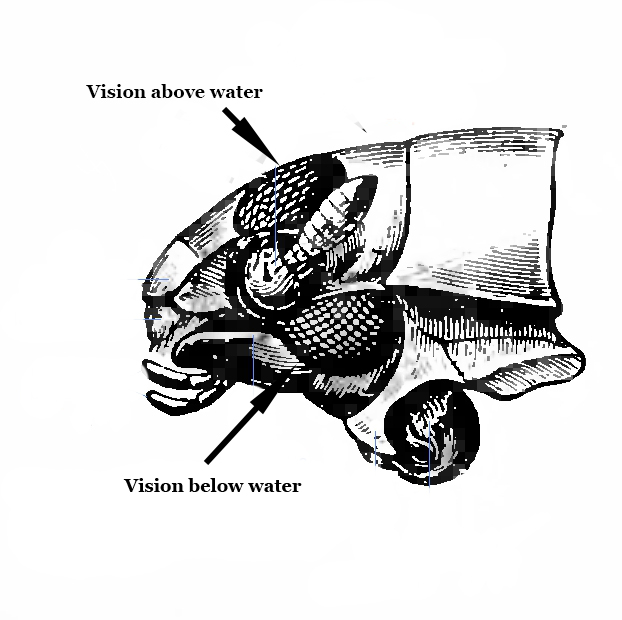
Their compound eye on each side is split into two parts, one part is apparently adapted for vision in the air above water, and the other part is specialized for vision underwater. The club-shaped object between the two halves of the eye is one of the antennae.
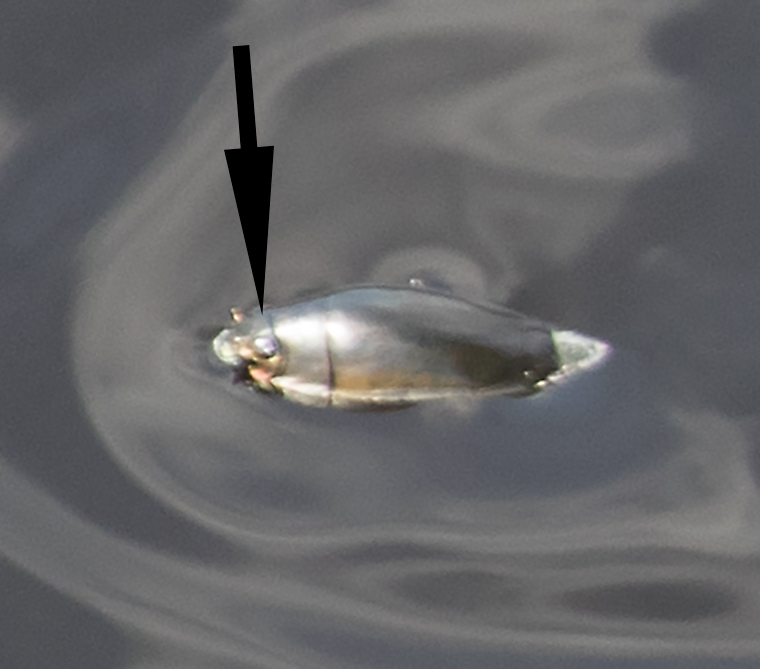
My photographs were taken when the beetles were swimming about on the surface so I am only able to illustrate the upper half of each compound eye. You can just make out the upper eye as a bump near the head of the beetle in this photograph and the one following (indicated by the arrows).
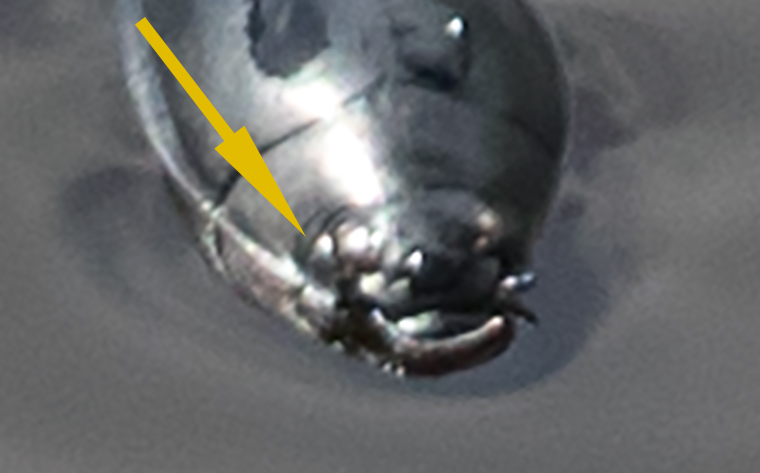
To see the lower half of the eye, I would have to capture some of the beetles. Next time I will take a net! Here are a few more photographs of these interesting creatures.
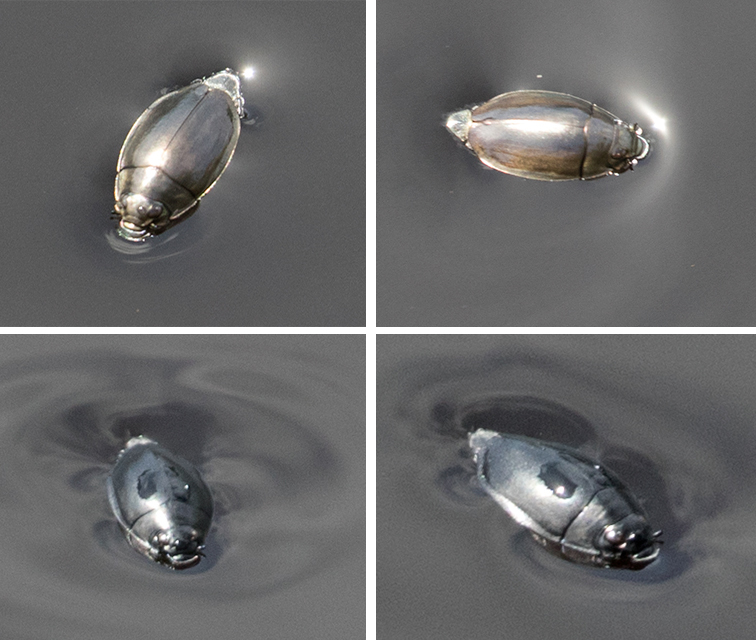
A couple of other interesting things about these beetles, they can fly quite well to find another pool of water if their present location becomes unsuitable. Also, one might wonder why they are not eaten up by fishes. They secrete a compound that is noxious to fishes, and they are thus protected.
